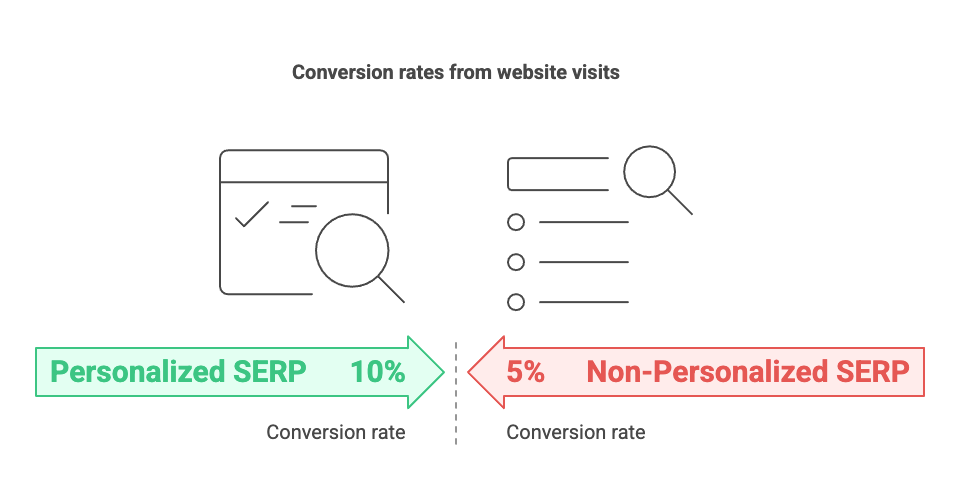Many sites around the web have taken a hit with their traffic numbers because of Google’s recent Panda and Penguin updates, and it would be hard to argue that this is in any way positive. But, if we put these causes for traffic loss aside, there is another factor that is of concern to SEOs and webmasters.
Even if algorithm changes haven’t caused traffic drops, things have changed. Google’s recent push to personalize search results has made something almost impossible. It’s now very hard to predict what a specific user’s SERP will look like with any certainty.
All the SEO in the world won’t help drive traffic. This is true if Google decides something. They might use a user’s browsing, search, and social media data. Based on this, they might think a user wants something unrelated to your site. This could happen even if the user enters seemingly relevant search terms.
However, in theory, SERP personalization reduces traffic in one way. It reduces false positives. Google considers web history. It also considers search history and social media signals. By doing this, Google tries to reduce the ambiguity of search keywords. Consequently, it aims to refer only interested visitors. These are visitors who will likely be interested in a site’s content. Therefore, even if overall traffic decreases, conversion rates should stay the same. They might even increase as a percentage of visits.
So, what can site owners do
How can sites attract relevant traffic? How can they avoid false positives? On-page SEO is the obvious first step. It’s always been crucial to ensure a site’s keyword profile targets relevant traffic. Site owners should avoid trying to rank for only vaguely relevant long-tail keywords.

If your site sells diamonds, you might want to get traffic from trending searches. An example is the Queen of England’s Diamond Jubilee. However, this might lead to higher traffic. Unfortunately, most of that traffic will be from users who leave quickly. Therefore, remember that quality is better than quantity in all things..
Creating a site with fresh, relevant, rich content will both help with SEO and encourage sharing on social networks, and although we know that social signals are not more important than incoming links, they are a significant factor in building personalized search results.
The take home message is that higher traffic is not always the metric that webmasters should be most concerned about. Less traffic with higher conversion rates is actually a positive outcome.
Related
A detailed history and explanation of the Google Panda and Penguin updates, their goals, and effects on websites:




